How and when to collect currant and raspberry leaves for drying for the winter
Infusions of currant and raspberry leaves have a pleasant taste and healing properties. Currant leaves help fight colds and improve immunity throughout the year. However, the beneficial properties are preserved only if the leaves are prepared for storage correctly.
We will tell you in this article about when to collect currant and raspberry leaves for drying for the winter and how to dry them.
When is it time to collect currant and raspberry leaves?
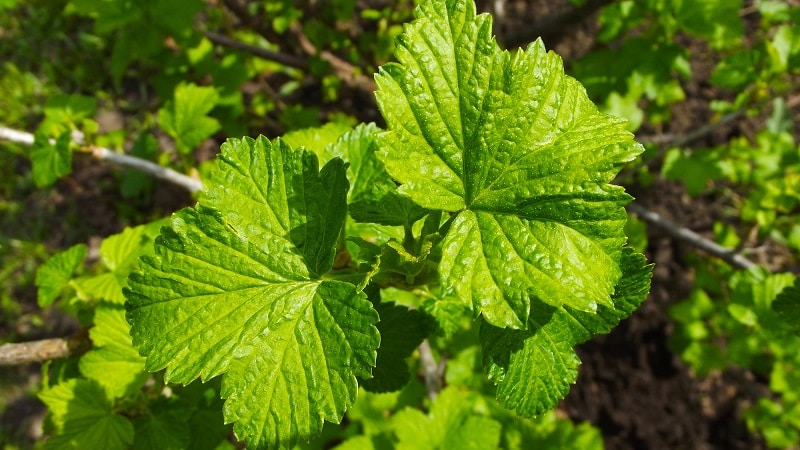
Raw materials for drying are collected in August – September. During this period, a maximum of useful substances accumulate in the leaves. In cold regions, harvesting ends in summer. The task is to be in time before the autumn recycling process begins, during which useful substances are transported to the trunk and root, and the leaves turn yellow.
On a note. If you do not meet the deadline and collect the leaves earlier, the infusion will not have a pronounced taste and aroma.
How to assemble correctly
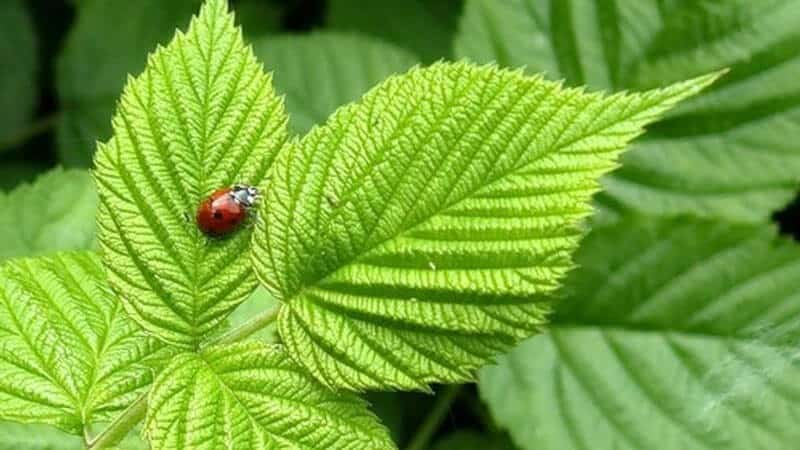
The ideal collection time is 10-11 am. At this time, the dew is already drying, and the sun is not yet hot. The weather should be dry, it is advisable that there is no rain 2-3 days before the start of collection. Damp leaves may become moldy before they dry out. Some gardeners argue that it is better to collect plant materials during the waxing moon. But there is no scientific data confirming this rule.
Remove whole leaves without signs of disease or damage. Currants are collected from the middle part of the branches. If you tear off the top leaves, the ripening of the berries may stop.The lower ones have few nutrients. Young currant shoots without berries and raspberries are picked and dried along with the tender apical leaves. Young branches will only improve the quality of the tea.
Drying methods
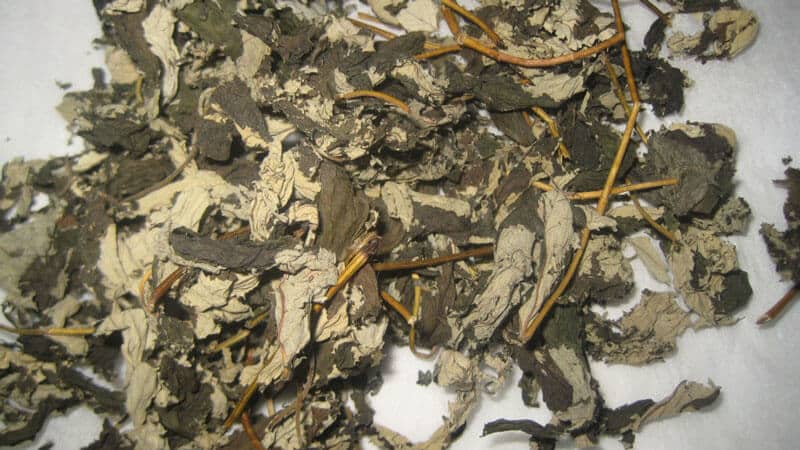
There are several drying methods. If you maintain the temperature correctly, the maximum of nutrients will be preserved. Drying begins within 1-2 hours after collection.
Important! You can determine readiness by crumpling the leaves with your fingers. If they crumble easily, they are ready for storage.
In the oven
Place parchment paper on a baking sheet and torn leaves in several layers on top. Set the temperature to 50°C. If the oven does not support the desired mode, open the door slightly. The drying process lasts 10-12 hours.
In the microwave
Using a microwave for drying is irrational. You can dry just a few handfuls of leaves. The device is turned on for 30-60 seconds, waited for 10-15 minutes and turned off - otherwise the leaf mass will overheat, which will lead to the destruction of useful substances. The amount of heating depends on the microwave; the process is completed when the product is ready.
In an electric dryer
An electric dryer is the most convenient device for preparing currant and raspberry leaves. Load the bowls, turn on the device and get the result after 10-12 hours.
On air
Preparation without heating allows you to preserve maximum nutrients:
- The leaves are laid out on a backing made of natural cotton fabric.
- The raw materials are periodically turned over.
- If rotting is detected, damaged leaves are removed.
Dry in dry rooms out of direct sunlight. A small number of shoots can be prepared on the windowsill.
Leaves with shoots are tied into bunches and hung on a rope.
Without heating, the drying process will take 1-2 weeks.
Fermentation
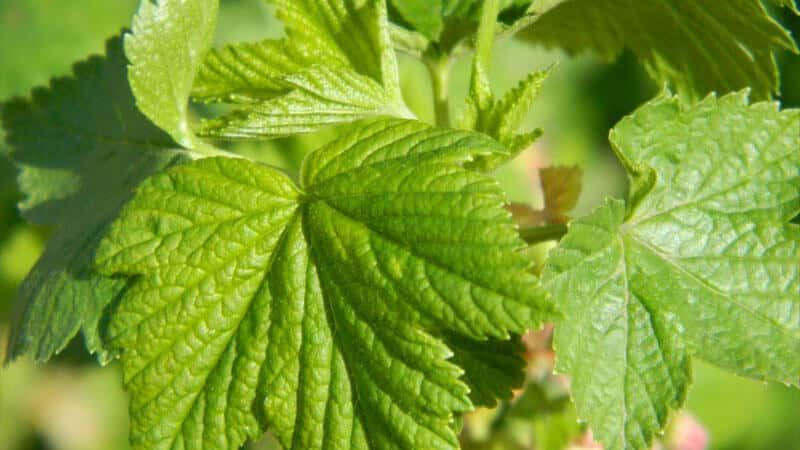
Fermentation is not a harvesting method, but a process of decomposition of organic substances under the influence of an enzyme. After its completion, the composition of the product changes, a new, more pronounced taste and aroma appears. Currant and raspberry leaves are rarely fermented, but if you want to try, here is the algorithm:
- The collected raw materials are laid out in a thin layer on paper or fabric and left in a cool, dark place for 20-30 hours.
- The leaves are rolled until juice appears on the surface. Then they are placed in jars, baskets, pans and left to ferment until the characteristic aroma of currants or raspberries appears in the room. If the leaves become dry during the process, they are sprinkled with water.
- The green mass is crushed and dried in the oven at 90°C for about an hour.
The finished leaves should crumble, as with any drying.
Interesting. You can dry it in the dryer or in the open air. During the fermentation process, a large amount of moisture is lost. Therefore, drying time is significantly reduced.
Storing dried raspberry and currant leaves
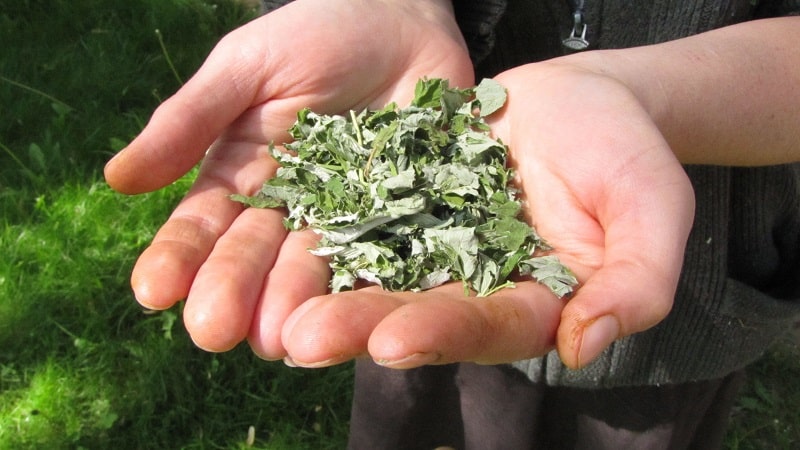
Dried leaves are stored in hermetically sealed plastic or glass containers. You can use paper and fabric bags. But in this case, you will need to find a dry place in the house - moisture ingress will lead to spoilage of the product.
Expiration dates
If stored properly, dried leaves can be brewed until spring if they do not show signs of spoilage. If mold or rot appears, the workpiece is thrown away. The healing properties last for 2-3 months, then the amount of beneficial substances gradually decreases.
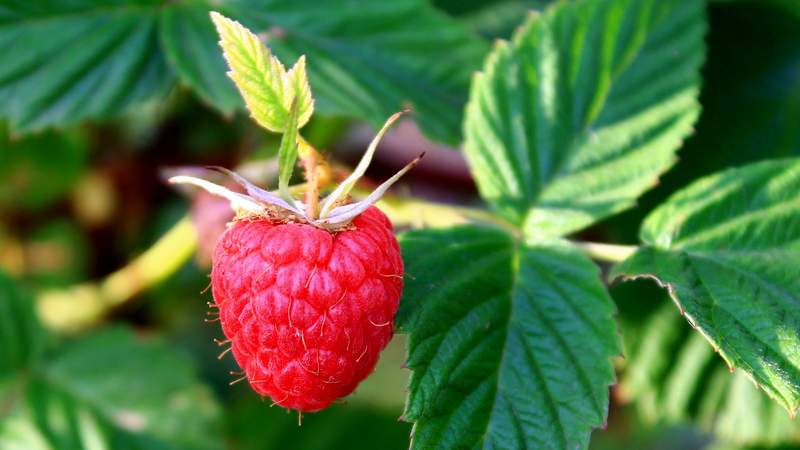
This is interesting:
The best recipes for preparing leaf celery for the winter.
How to prepare crumbled green cabbage leaves for the winter.
Conclusion
Raspberry leaf tea and currants are brewed until spring, if the raw materials have been correctly collected and prepared. The collection is carried out at the end of summer or early autumn, then the leaves are dried using one of the standard methods. The most gentle method is in the fresh air, and the fastest and most convenient is in an electric dryer.